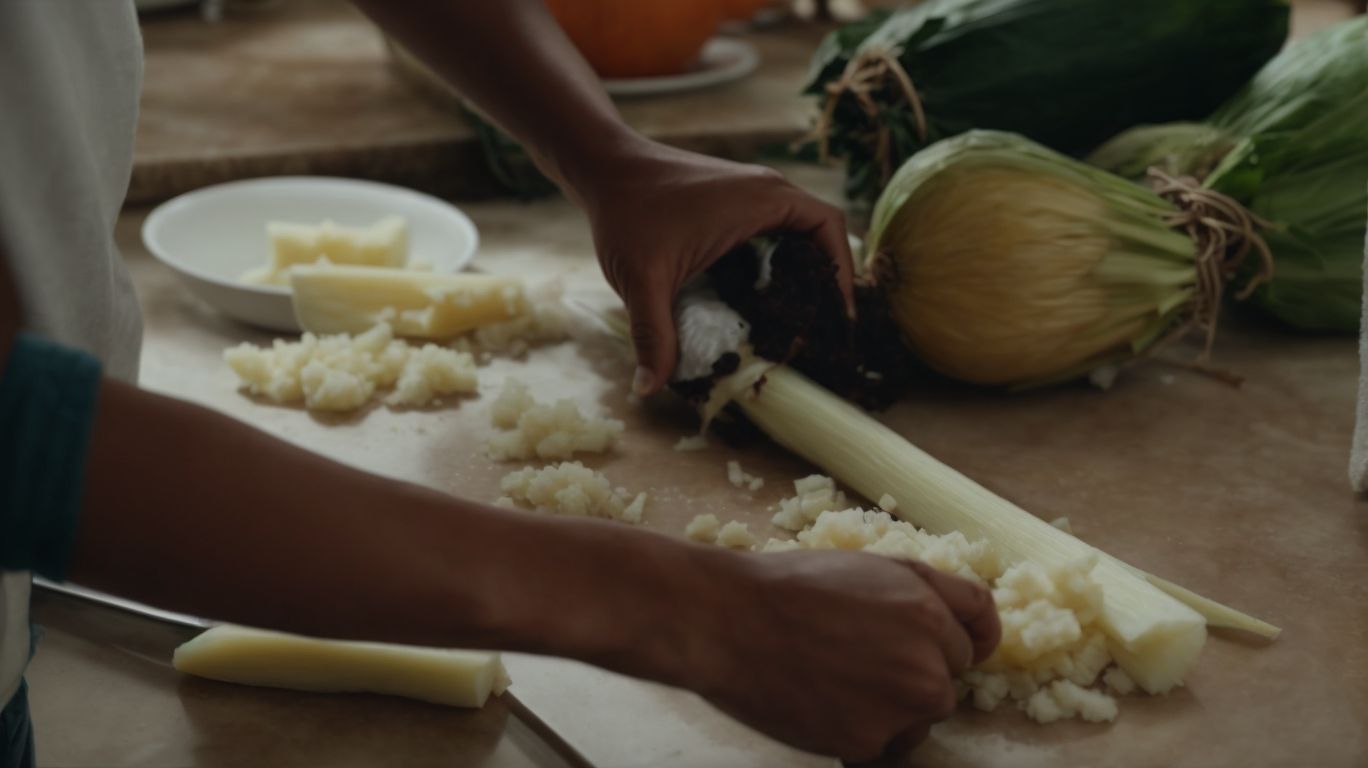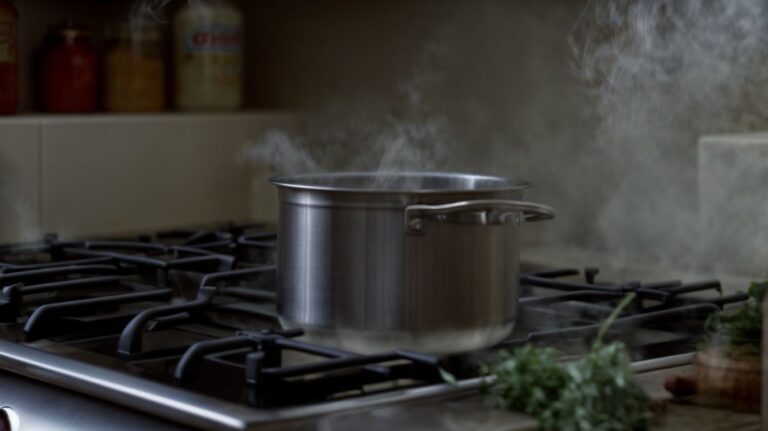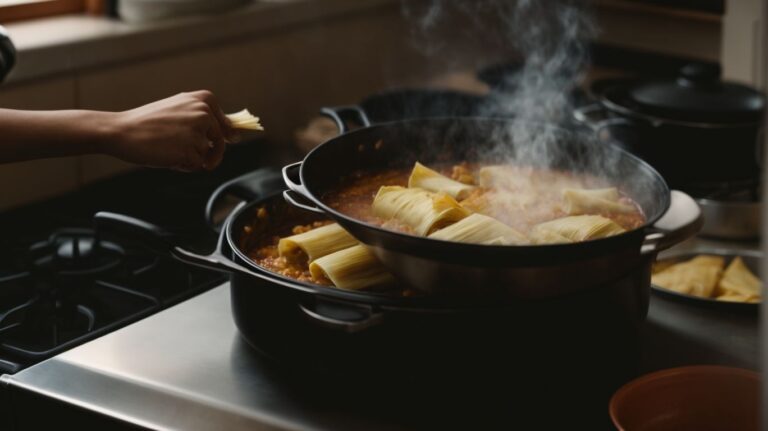How to Cook Yuca?
Curious about the versatile and delicious root vegetable known as yuca?
We will explore what yuca is, where to find it, how to select the best yuca, and how to prepare it for cooking.
Learn about peeling and preparing yuca step-by-step, along with different cooking methods like boiling, frying, and baking.
Discover mouth-watering dishes to use yuca in and get tips for cooking with this unique ingredient.
Let’s get cooking with yuca!
Key Takeaways:
What is Yuca?
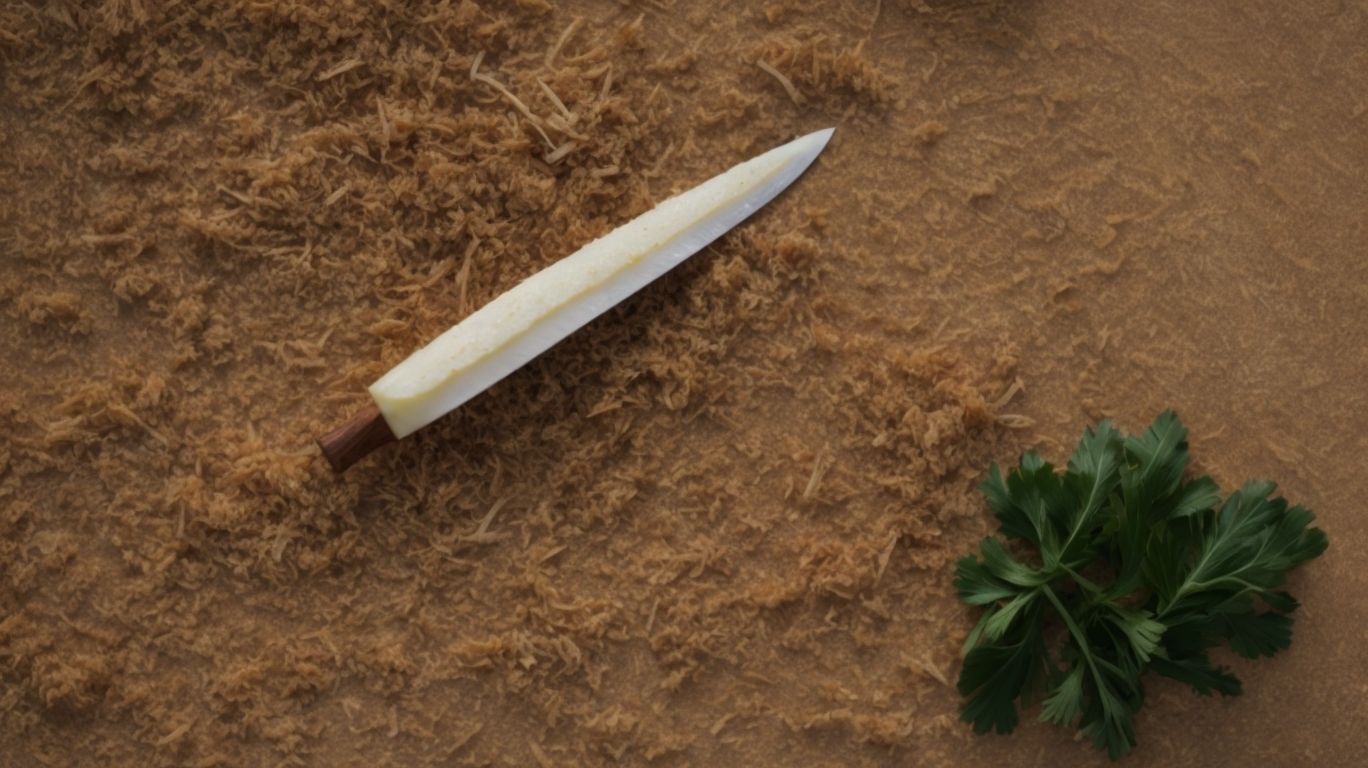
Credits: Poormet.Com – Gregory Rodriguez
Yuca, also known as cassava, is a starchy root vegetable widely used in various cuisines, especially in Central America and the Caribbean.
Yuca, often referred to as the ‘tuber of life’, is a staple food in many cultures due to its versatility and nutrient-rich properties. Fresh yuca has a mild, slightly sweet flavor and a texture that can be likened to a mix between a potato and a plantain. In Caribbean and Central American cuisines, yuca is commonly used in savory dishes like stews, soups, and casseroles.
One of the great conveniences of yuca is that it is available both fresh and frozen, making it accessible to cooks worldwide. Frozen yuca is often pre-peeled and cut, ready to be used directly in recipes, saving time and effort in the kitchen.
Where Can You Find Yuca?
Yuca can be found in various grocery stores and supermarkets such as Kroger, Sprouts, and Walmart, making it accessible to consumers looking to incorporate it into their recipes.
Yuca, also known as cassava, is a starchy root vegetable that has gained popularity in recent years due to its versatility in cooking and its nutritional benefits. Its availability in major retail chains like Kroger, Sprouts, and Walmart ensures that customers across the country have easy access to this incredible ingredient. Whether you’re seeking to make traditional Latin American dishes or experimenting with new flavors, yuca’s presence in the market allows for endless culinary possibilities.
How to Select the Best Yuca?
Choosing the best yuca involves examining its appearance, texture, and freshness to ensure optimal quality for your culinary creations, as recommended by culinary professionals like Romulo Yanes.
When selecting yuca, look for a smooth, unblemished skin that is free from cuts or soft spots. The ideal yuca should feel heavy for its size, indicating a high moisture content and freshness. Gently squeeze the yuca to ensure it is firm with minimal give, a sign of ripeness. Avoid yuca with wrinkled or dried-out skins, as this may indicate age or improper storage. As the esteemed Romulo Yanes suggests, prioritize yuca that boasts vibrant color, indicating peak quality and flavor for your culinary endeavors.
What to Look for When Choosing Yuca?
When choosing yuca, look for roots that are firm to the touch, free from blemishes, and have a mild aroma, ensuring they are suitable for your recipe, especially if you plan to infuse flavors like garlic cloves during cooking.
Yuca should also have a consistent color throughout without any mold or dark spots, indicating freshness. The skin should be smooth and the flesh should not be overly soft or mushy. These characteristics are essential as they directly affect the texture and taste of the final dish.
A fresh and mild aroma is a sign of good quality, as any strong odors may suggest deterioration. When properly selected, yuca can be versatile for boiling, frying, or even as a side dish in stews and casseroles.
How to Prepare Yuca for Cooking?
Preparing yuca for cooking involves peeling the root, slicing it into desired shapes, and then soaking it in water with salt to remove any bitterness and enhance its flavor and texture.
First, begin by washing the yuca root thoroughly to remove any dirt or debris. Using a sharp knife, carefully peel the tough outer skin of the yuca, making sure to remove all the brown layer underneath.
Once the yuca is peeled, cut it into manageable pieces, and then proceed to slice it into your preferred shapes, such as cubes or sticks. Make sure to remove any fibrous core that runs through the center of the yuca.
Next, place the sliced yuca pieces in a bowl of cold water with a generous amount of salt and let them soak for at least 30 minutes. This soaking process not only helps to eliminate the inherent bitterness of yuca but also improves its overall taste and texture by making it softer and more flavorful.
After soaking, rinse the yuca thoroughly under running water to wash away the excess salt. Your yuca is now ready to be used in various delicious recipes such as yuca fries, stews, or casseroles.
Step-by-Step Guide to Peeling and Preparing Yuca
Follow a step-by-step guide to peel and prepare yuca for cooking, as recommended by culinary expert Christa Jimenez, ensuring that you achieve the desired texture and flavor in your dishes.
To start, select fresh yuca roots that are firm, with smooth skin and no soft spots. Using a sharp knife, carefully cut the ends of the yuca root and make a shallow lengthwise slit through the skin. Gently peel off the tough outer brown skin to reveal the starchy white flesh inside. Rinse the peeled yuca under cold water to remove any dirt or residue. Next, slice the yuca into manageable pieces, about 2-3 inches in length, to make the cooking process more efficient.
How to Cook Yuca?
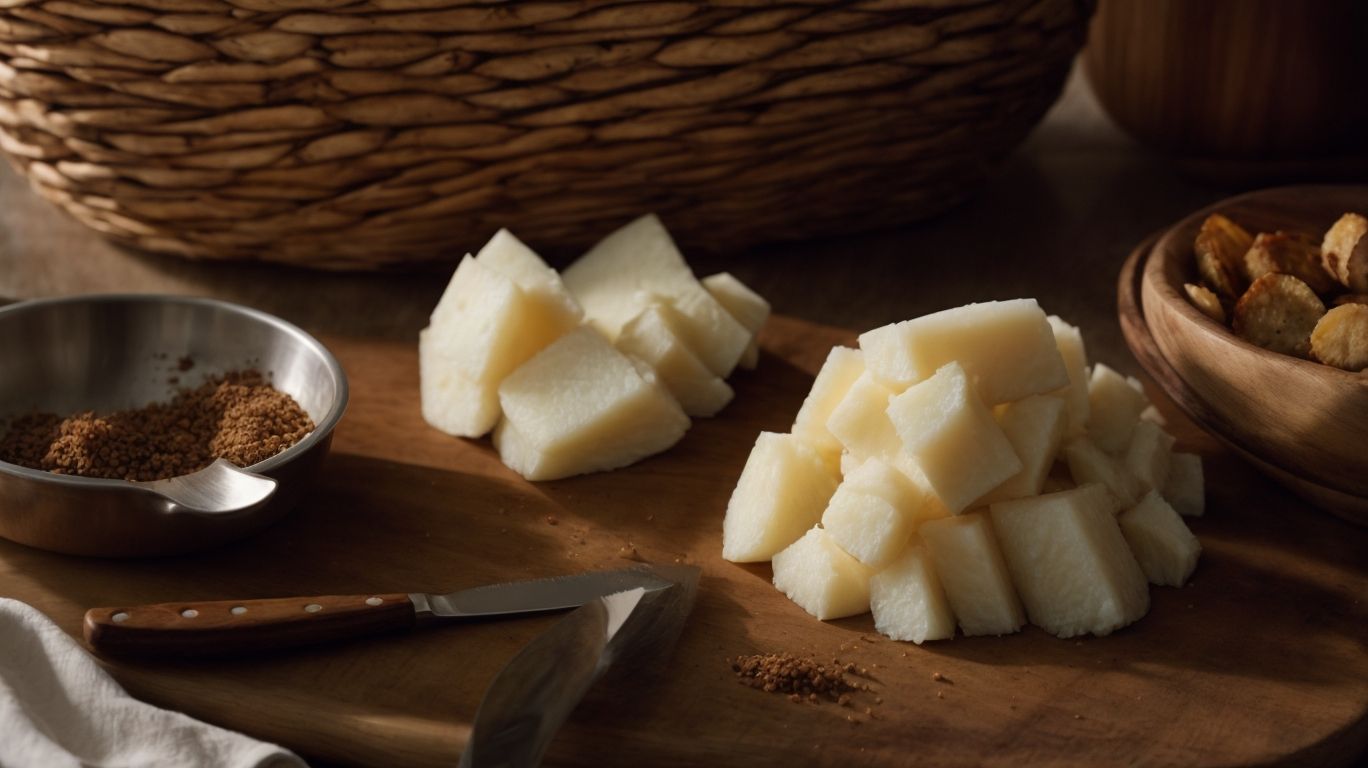
Credits: Poormet.Com – Jordan Roberts
Cooking yuca offers a myriad of possibilities, from traditional Cuban-style dishes to modern fusion recipes that showcase the versatility of this root vegetable, often enhanced with flavors like garlic and onions.
Yuca, also known as cassava, can be prepared in various ways, such as boiling, frying, or even baking, each method offering a unique texture and flavor profile to the dish.
In traditional Cuban cuisine, yuca is often boiled until tender, then mashed with generous amounts of garlic, onions, and olive oil to create a creamy and flavorful side dish.
On the other hand, modern fusion recipes might pair yuca with ingredients like coconut milk, cilantro, or even spices from different culinary traditions, resulting in innovative and exciting flavor combinations.
Boiling Method
Boiling yuca is a popular method that helps soften the root vegetable, making it ideal for mashing or incorporating into savory dishes, as tested and perfected by experts at the Food & Wine Test Kitchen.
When boiling yuca, start by peeling the thick, rough skin to reveal the starchy flesh beneath. Cut the yuca into manageable pieces, removing any fibrous core they may contain. Next, place the yuca in a pot of salted water, ensuring it is fully submerged. Bring the water to a gentle boil and cook until the yuca is fork-tender. This meticulous process ensures that the boiled yuca retains its distinct flavor and texture.
Frying Method
Frying yuca creates crispy and flavorful snacks or side dishes, a beloved tradition in Latin American cuisine, with expert tips from the Allrecipes Test Kitchen to achieve the perfect crunch and golden brown color.
In terms of frying yuca, the key is to start with raw yuca that has been peeled and cut into uniform shapes, such as sticks or rounds, for even cooking. The Allrecipes Test Kitchen suggests parboiling the yuca first to soften it slightly before frying, resulting in a creamy interior contrasted by a crunchy exterior. For seasoning, a simple sprinkle of salt is classic, but you can also explore flavor profiles by adding garlic powder, paprika, or a squeeze of lime. Different regions across Latin America boast their own variations of fried yuca, showcasing the diversity and creativity within this culinary tradition.
Baking Method
Roasting yuca in the oven yields a delightful combination of textures and flavors, as showcased in recipes from publications like Gourmet magazine, offering a simple yet delicious way to enjoy this versatile root vegetable.
When roasted yuca is cooked in the oven, the dry heat helps to caramelize its outer layer, resulting in a crispy exterior that contrasts beautifully with the tender interior. This cooking method also intensifies the natural sweetness of the yuca while adding a slight nutty undertone.
The versatility of roasted yuca is truly remarkable; it can be seasoned with various herbs, spices, or citrus zest to complement different dishes. Whether served as a standalone side dish or incorporated into salads or stews, roasted yuca brings a unique and satisfying element to any meal.
What are the Best Dishes to Use Yuca In?
Yuca can be incorporated into a variety of dishes, from classic Costa Rican recipes to innovative culinary creations, with popular options including yuca fries, chips, mash, and soups that showcase the root vegetable’s versatility.
One iconic yuca-based dish is the traditional Costa Rican mashed yuca, known as ‘yuca con mojo.’ This flavorful side dish combines creamy mashed yuca with zesty garlic, citrus, and sometimes a hint of spice, creating a mouthwatering accompaniment to main courses.
Modern chefs have brought a contemporary twist to yuca preparations, infusing the ingredient into dishes like yuca fritters or topping them with unique seasonings to elevate the flavors. Plus being a great alternative to potato-based options, yuca stands out for its ability to add a distinct texture and taste to a range of recipes.
Yuca Fries
Yuca fries are a delicious and crispy alternative to traditional potato fries, often served with a side of Salsa Lizano for a touch of Costa Rican flair, adding a unique and flavorful twist to this classic snack.
Prepared from the starchy root of the yuca plant, these fries boast a rich, creamy texture with a slightly nutty flavor, distinct from the typical potato fries. The yuca, also known as cassava, is peeled, sliced into batons, and fried to golden perfection, ensuring a delightful crunch in every bite.
When compared to potato fries, yuca fries offer a denser consistency and a delightful chewiness, making them a favorite among those seeking a heartier snack. The accompaniment of Salsa Lizano, with its blend of spices and tangy notes, elevates the dish and highlights the influence of Costa Rican cuisine.
Yuca Chips
Yuca chips offer a crunchy and flavorful snack option, perfect for dipping or enjoying on their own, as featured in recipes from culinary publications like Martha Stewart Living that emphasize gourmet presentations and creative seasonings.
Preparation of yuca chips involves peeling the tough outer skin of the yuca root and slicing it thinly to achieve that sought-after crispiness upon frying. Some recipes recommend soaking the sliced yuca in water before frying to remove excess starch and improve the texture. Once fried to a golden hue, these yuca chips can be seasoned with a variety of flavors like sea salt, paprika, or even infused with herbs for a more elevated taste profile.
In terms of presentation, yuca chips can be elegantly arranged in a table setting alongside gourmet dips such as truffle aioli or mango salsa to showcase their versatility as a sophisticated snack option. The visually appealing nature of yuca chips makes them a popular choice for upscale gatherings or cocktail parties, adding a touch of exotic flair to the culinary spread.
Yuca Mash
Mashed yuca is a creamy and comforting dish with Latin American roots, offering a versatile side that pairs well with various main courses, as perfected by culinary experts at Dotdash Meredith Food Studios.
What sets mashed yuca apart is its unique texture, which can range from velvety smooth to slightly grainy, creating a delightful contrast to other dishes on the table. When expertly prepared, it strikes a balance between being creamy yet substantial, making it an ideal accompaniment for rich meats or spicy stews.
Yuca Soup
Yuca soup is a hearty and flavorful option that can be customized with various ingredients, offering a warm and satisfying meal, with family recipes passed down through generations, embodying the cultural richness of the dish.
Originating from Latin America, yuca soup has evolved into a versatile dish that reflects the cultural influences of each region it is found in. The preparation involves simmering yuca roots, also known as cassava, in a savory broth along with a medley of meats, vegetables, and spices.
Yuca soup holds a special place in family gatherings, where each household adds its unique twist, whether through the use of bold spices, creamy coconut milk, or tangy citrus flavors. This adaptability allows yuca soup to resonate with a wide range of palates, capturing the essence of comfort food with a cultural flair.
What are Some Tips for Cooking with Yuca?
When cooking with yuca, consider experimenting with different cooking techniques to discover new flavors and textures, while also being mindful of its nutritional facts to create balanced and wholesome meals that cater to a diverse audience.
Boiling yuca until tender is a common method, but try steaming it instead for a different texture. Yuca can also be fried to achieve a crispy exterior while maintaining a soft interior. Pairing yuca with bold spices like cumin, paprika, or garlic can elevate its taste profile. Consider creating a yuca mash by blending cooked yuca with butter and seasonings for a creamy side dish.
Frequently Asked Questions
What is Yuca and how do I cook it?
Yuca, also known as cassava, is a starchy root vegetable commonly used in Latin American and Caribbean cuisine. To cook yuca, start by peeling and cutting the root into smaller pieces before boiling or frying them.
What is the best way to peel and prep yuca for cooking?
To peel yuca, first cut off the ends and then use a sharp knife to slice off the outer brown skin. Next, remove the woody core from the center of the yuca before cutting it into smaller pieces for cooking.
Can I boil yuca like other root vegetables?
Yes, boiling is a common method for cooking yuca. Simply cut the yuca into smaller pieces and boil them in a pot of water for about 20-30 minutes until they are soft. You can also add salt or other seasonings to the boiling water for added flavor.
Is frying yuca a healthier alternative to boiling it?
Frying yuca can result in a crispy and delicious texture, but it is not necessarily a healthier option. Frying can add extra fat and calories to yuca, so it is best to enjoy it in moderation.
Can I use yuca in place of other starches like potatoes or rice?
Yes, yuca can be a tasty and versatile replacement for other starches in dishes. Try using yuca in dishes like stews, soups, or even as a side dish in place of potatoes or rice.
I’ve heard that yuca is poisonous if not cooked properly, is this true?
Yes, yuca contains cyanide compounds that are toxic if consumed in large quantities. However, as long as you peel and cook yuca properly, it is safe to eat and a delicious addition to your meals.

